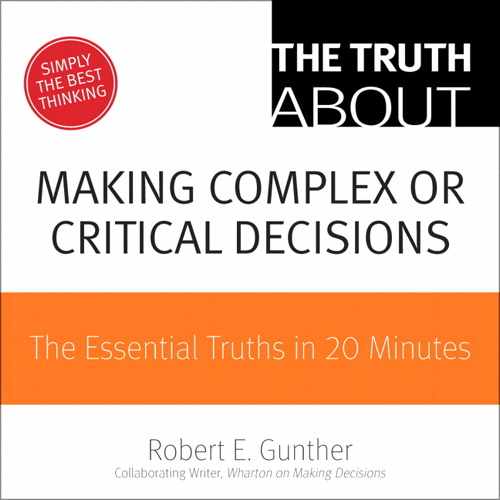TRUTH 5 Boil knowledge down to its essence—and then act on it
Few subjects are more complex than nutritional advice. Every week there is some new diet based on blood type, eliminating this food or that, or evoking scenes of bikini-clad sunbathers. And every week, there is some new study that shows that some food, such as butter, is bad for you. And then the next week, we read: Oh, wait, maybe it’s not so bad after all.
In his wide-ranging discussion in The New York Times Magazine, Michael Pollan (author of The Omnivore’s Dilemma) boils down his nutritional advice to a simple statement: “Eat food. Not too much. Mostly plants.”2 He goes on to recommend that we not eat anything that our great-great-grandmother wouldn’t have eaten. This distills his complex topic of nutrition (a list of the antioxidants in thyme alone goes on for eight lines) and the often-heated debate over processed, vitamin-fortified “food.”
What Pollan offers is a simple heuristic that distills three decades of research on food and nutrition into an actionable set of principles. It actually allows readers to make decisions about what to eat. Compare this to the never-ending and overwhelming stream of research and opinion in the popular media. Oats were added to almost everything, and now Omega-3 is the new savior of nutrition. The sheer quantity and diversity of information becomes overwhelming, so people throw up their hands and head for the McDonald’s drive-thru.
In dealing with complex issues, a simple heuristic for decision making can keep you from being overwhelmed by the data. In venture capital and entrepreneurship, the heuristic might be “to fail fast and fail cheap.” This conserves resources and speeds up learning. In the 1960s film The Graduate, one well-meaning adult boils down his advice for success to the young Benjamin Braddock (played by Dustin Hoffman) to one fateful word: “plastics.” That is about as simple as it gets.
When you’re facing a complex and confusing decision, see if you can come up with a simple principle (or heuristic) you can follow.
The surprising conclusion reached by Robert Meyer and Wesley Hutchinson of the Wharton School is that the simple heuristics used by managers to make decisions often lead to surprisingly good results.3 Managers who are constrained by time and attention often don’t go through a rational process of decision making. This is particularly true in multistage decisions that involve looking at the future. But managers can make the wrong decision at first and learn over time to arrive at more optimal decisions. They are, in the words of Meyer and Hutchinson, “bumbling geniuses.”
In using such shortcuts, we need to be sure we are in an environment that will give us the feedback needed to learn from our past decisions. If we are in a foggy or ambiguous environment, we may not be able to improve our shortcut or recognize when it is leading us astray.
The other trick to watch for with heuristics is that the world sometimes changes. New information arrives that might challenge this heuristic. If you come down with cancer or diabetes, you may need to change your decisions about diet and exercise. The simple rules can make it harder to see new information and act on it. In the workplace, the salaryman in Japan or the company man in the U.S. faced this situation when the standard rule for getting ahead—find a good company and move up the career track—was challenged by layoffs and reorganization. (By the way, they were, in fact, salary “men,” which was one of the limits of the view.) The new compact has led to a “You, Inc.” heuristic—where employees try to develop as much experience and skills as they can while moving across several organizations. So you need to be vigilant in determining whether your rules still fit as the world changes.
